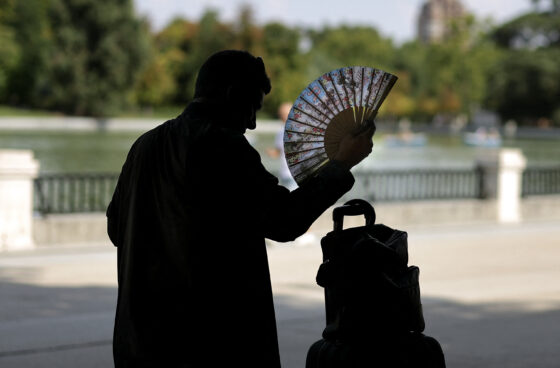
Amid a heat wave in Europe, social networks have seen an increase in posts of extreme temperatures that would have been recorded in the last century to deny the existence of global warming, but these heat spikes, even assuming they existed, do not contradict the reality of the phenomenon, according to the experts.
In recent weeks, internet users have reproduced decades-old very high temperature readings and compared them to current mercury levels from the heat waves that swept across the continent in June and July.
The method varies little: they use old almanacs, reference tables or old press articles to find, for example, temperatures above 50ºC that would have been recorded in Spain. The goal is to deny global warming.
However, the fact that very high temperatures have been observed in the past is perfectly compatible with global warming, say experts consulted by AFP, who warn that these publications present isolated data that, moreover, were not correctly detected.
52ºC in Zaragoza?
One of the most viral posts on Facebook in recent weeks is a screenshot of an article in the June 23, 1935, edition of The New York Times that a temperature of “127 degrees Fahrenheit” or 527 degrees C would have been reached the day before in Zaragoza, in northeastern Spain.
This temperature is significantly higher than the national record recorded so far by the Spanish Meteorological Agency (AEMET), which recorded 47.6 ºC on August 14, 2021 in La Rambla, a small town in the province of Cordoba, Andalusia (south) .
But AEMET spokesman Rubén del Campo told AFP Factual that the maximum temperature recorded in Zaragoza that day was 39ºC. “These data above 52ºC are incorrect. It is not in our weather database and in fact there is no reading higher than 50ºC”he assured.
Anyway, “even if the data had been correct – and I insist it is not – it would not be evidence to deny (the existence of) climate change”continued Mr. del Campo.
The Spanish daily La Vanguardia had also repeated record temperatures in 1935, but had indicated that the 51 and 52 degrees had been recorded “in the sun”.
However, to be valid, a measurement must be taken under conditions that meet very strict criteria, the experts warn.
“The sensors must be protected from sun and rain, and the temperature in the (weather) station must be the same as outside”, explains Ricardo Torrijo, meteorological technician at Aemet. The temperatures above 50°C mentioned by the Vanguardia are recorded in the sun and are therefore not valid.
A cover of the weekly magazine El Espanol dating from August 1957 has also recently gone viral on social networks for the same reasons. Under the title “The hottest summer of the century”it reported temperatures around 50 degrees, but they were also taken in the sun.
But even in the event that we reached these 50 degrees, “that would be no reason to doubt that the current situation is hotterAFP Isabel Cacho, a professor at the University of Barcelona and a climate change specialist, told AFP.
anomaly
“The anomaly on that particular day has a very small effect on the average (temperatures)” in the long run, so that “the trend is not changing”explains Pedro Zorrilla, climate expert at Greenpeace Spain.
José Luis García, spokesperson for the same environmental NGO, adds: “these high temperature data cannot deny the existence of climate change”because “this has nothing to do with”. “Temperature data at the time is one thing, rising trend and average temperature is quite another”he makes clear.
Scientists agree that the recent multiplication of heat waves is a direct result of global warming, increasing their frequency, duration and intensity.
(AFP)